Toyota has never been shy of producing innovative cars, but few have turned heads – or headlines – like the Toyota iQ. This groundbreaking compact city car, less than three metres long, was launched in 2008 to a background of accelerating environmental awareness and the growing problems of urban pollution and congestion. It was these issues, which today form the bedrock of any discussion about the future of motoring, that absolutely shaped the mould-breaking iQ.
Toyota iQ: development
The Toyota iQ was created from the ground up and the car’s gestation period was lengthy – almost five years from the initial proposition in 2003 through to the start of production. The design team, led by Chief Engineer Hiroiki Nakajima, was tasked with rethinking the small car to create an ultra-compact and environmentally friendly four-seater that was at home in crowded cities and yet which offered stylish looks, appealing quality and a refined drive. It was a lot to fit into a sub-A-segment model less than three metres long overall.
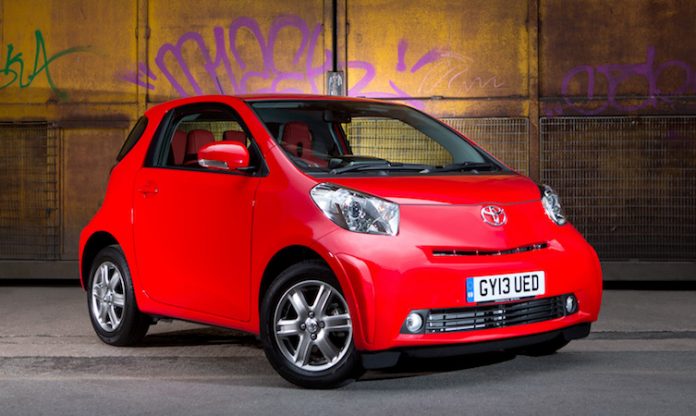
An early development programme focused on taking a revolutionary approach to packaging and miniaturisation. The Japanese design philosophy of ‘kaizen’ – meaning continuous incremental improvement – simply didn’t apply here. Instead, ‘kakushin’ – for revolutionary change or radical innovation – became the driving force behind the project. Every detail, every subset of components had to be rethought, not just in their design but also in how they related to each other and how they could be packaged within the iQ’s footprint.
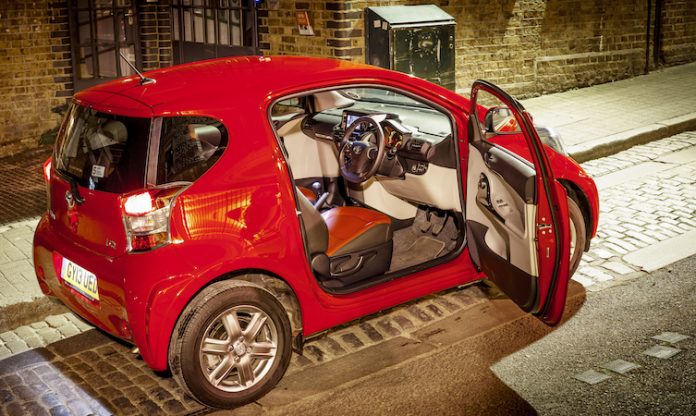
At the same time, designers both in Japan and at Toyota’s ED2 Design Centre in France concentrated on shaping what would become the iQ’s striking exterior styling. Then, after that initial two-year development period, Toyota’s senior management gave the project the go-ahead for production and the iQ concept was revealed at the 2007 Frankfurt Motor Show.
Throughout its inception, development and production, the iQ’s environmental message was clear: that the reduction of fuel consumption, CO2 emissions and pollution was crucial if cars were to continue having a place in the modern world. The Toyota iQ was a bold statement of intent. But Toyota’s commitment to reducing the environmental impact of the iQ ranged wider still, and the car’s production facility at the Takaoka Plant in Japan was repurposed to accommodate an innovative new assembly line that maximised energy efficiency.
Toyota iQ: launch
The iQ was launched at the 2008 Geneva motor show. Here was a sophisticated four-seat city car unlike anything else that was available. With a wheelbase of just 2000mm and an overall length of 2985mm, the iQ was a full 420mm shorter than its Aygo stablemate, and yet it was 65mm wider.
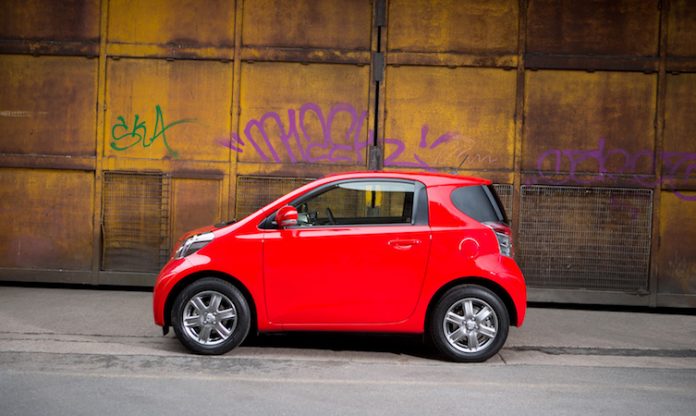
Dimensionally, the car’s nearest rivals were the two-seat Smart ForTwo (just 2695mm long but a strict two-seater) and the Smart ForFour (four seats, but considerably longer at 3752mm), but neither had the design sophistication, build quality nor equipment levels of the Toyota. In the UK the Toyota iQ was offered with a choice of two petrol engines, either a 68hp 1.0-litre VVT-i or a 98hp 1.33-litre VVT-i. The former laid down another industry benchmark: with CO2 emissions of just 99g/km, it was the first time a petrol-engined four-seater had broken the 100g/km mark.
The iQ’s distinctive styling gave it an energy and an instant identity all of its own. It was less than three metres long, but with a width of 1680mm and height of 1500mm, the iQ clearly followed the Japanese aesthetic design approach of ‘Perfect Imbalance’ (today, perhaps, we might call it ‘disruptive’). Its proportions forward of the B-pillar aped those of cars from a segment or two above, and yet from the trailing edge of the doors to the tail-lights, the car appeared abruptly truncated – and yet the design was at once harmonious and satisfying.
What is it like behind the wheel?
To sit in and to drive, the Toyota iQ offered an almost bewildering contrast of contradictions. For the driver and front passenger, the cabin presented a near-optical illusion of space within an impossibly small silhouette. Thanks to the generous overall width and aided by ultra-slim seats and an innovative thin door design, front-seat shoulder room was plentiful and apparently at odds with the iQ’s exterior dimensions. Compared with the ostensibly larger Aygo, the iQ’s cabin was a full 140mm wider inside.

Ahead and to the side, the cabin offered a view akin to that of a fully proportioned car in the A- or even B-segment. But a glance over the shoulder turned that impression of space on its head, with an improbably compact rear cabin and a rear window quite literally within touching distance.
Once on the move the contradictions continued. Thanks to that compressed wheelbase, wheel-at-each-corner stance and a turning circle of just 3.9 metres, the Toyota iQ was as agile and nimble in tight city streets as its stature suggested. But at higher speeds and on the motorway the it remained refined and stable despite the dimensions.

Somehow, too, the cabin was kept well insulated from the unsettling bump intrusion typical of so many short-wheelbase cars: ordinarily, when a compact car’s front wheels hit a large bump or pothole, the front suspension is still working to recover from the impact when the rears strike the same obstacle, which leads to passenger discomfort. But the iQ’s cleverly optimised front MacPherson strut and rear torsion beam suspension minimised such intrusions, and the cabin remained impressively undisturbed.
Small car engineering
Every element of the Toyota iQ was engineered and packaged to save weight and space. The asymmetric design of the dashboard, with an ultra-compact air conditioning unit and a detachable glovebox, created enough space for the front passenger seat to be moved forward to free up rear passenger space. Under the bonnet, the differential was mounted ahead of the engine and the steering gear adopted a centre take-off design, both of which freed up cabin space while allowing shorter front overhangs. And an ultra-slim 32-litre fuel tank, which used a special fuel pump that addressed the issues of gradient-induced fuel starvation and level accuracy usually associated with thin, flat fuel tanks, was mounted under the front seats.
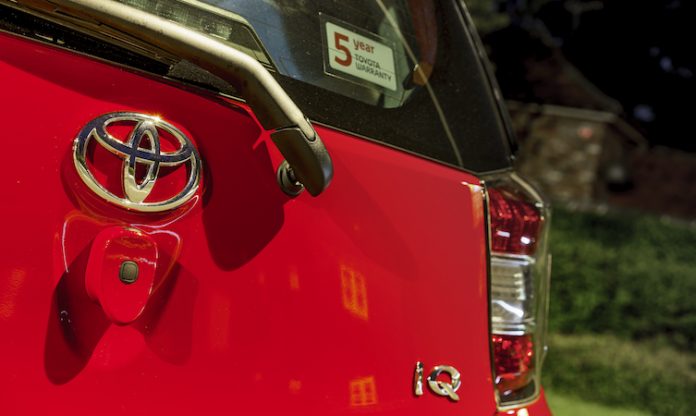
And yet the Toyota iQ was about more than nuts-and-bolts innovation. That interior was almost jewel-like in its execution was key to a deliberate strategy of altering consumers’ opinion of small cars and attracting new customers to the Toyota brand. Richly coloured trim materials adorned a cabin laden with stylistic flourishes that created an environment of urban sophistication. The ‘techno-organic’ design of the V-shaped centre console and the door armrests are actually mathematical emulations of the graceful, ocean-going manta ray, while the seamless integration of the audio unit and control functions enhanced the iQ’s premium feel.
At its launch the Toyota iQ was universally praised for its incredible packaging, deceptive big-car feel, dynamic handling and motorway stability. The car’s unique appearance and stylish design inspired a range of customisation option packs featuring eye-catching exterior decals and interior design flourishes, and there was even a high-performance version. The GRMN-tuned iQ Supercharger prototype, revealed at the 2011 Tokyo Auto Salon, was powered by a supercharged 1.33-litre VVT-i engine producing 128bhp and had a six-speed close-ratio gearbox, sports suspension, a full bodykit and 16-inch alloy wheels.

True to the iQ’s environmentally friendly agenda, there was even a battery-powered version, at least in pre-production form. The iQ EV Prototype appeared at the 2011 Geneva motor show. It was powered by an 11kWh battery pack (cleverly hidden beneath the front seat in place of the fuel tank), it could reach a top speed of 78mph and would travel up to 65 miles on a charge.
UK sales of the Toyota iQ stopped in 2014. Unfavourable exchange rates between Europe and Japan hampered sales, and alterations needed to meet upcoming EU emissions regulations would have further increased the model’s price. The model went out of production for other markets in 2015.
Despite this, the iQ remains a benchmark for engineering innovation, and the environmental message that drove its development has never been more relevant than it is today.
By Tim Dickson
See Toyota’s current model range by clicking here.
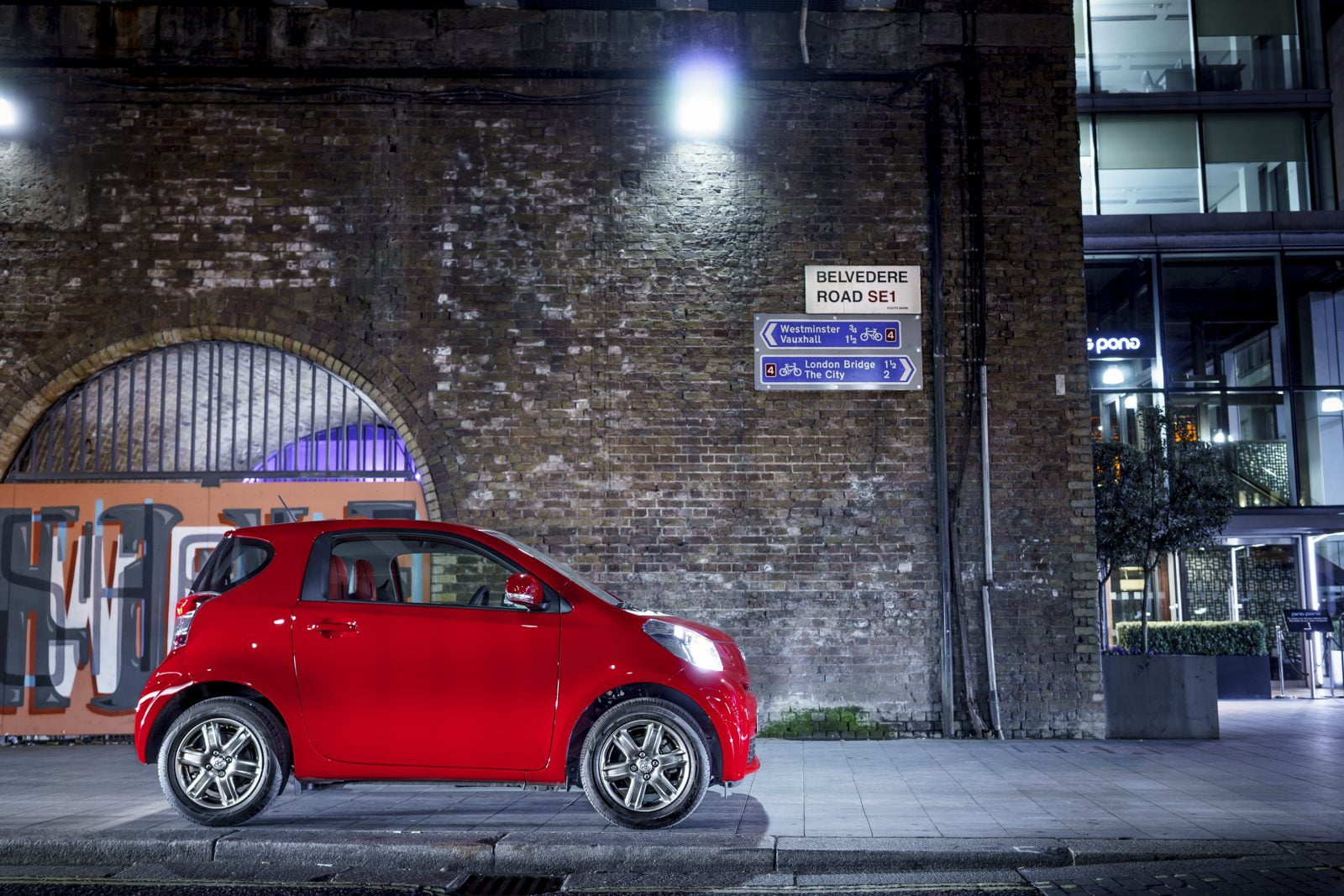


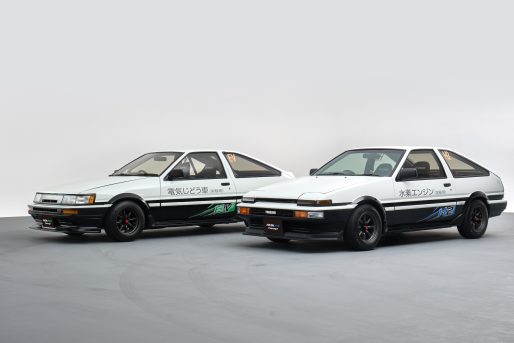

I love my IQ and find it ideal for my needs, I would like to replace it with another when the time comes.
Thankyou
Hi Iain,
Thanks for your comment. We’re so pleased to hear that your iQ is still serving you well.
Unfortunately, iQ was discontinued due to low customer demand, but you can check out our new Aygo X Prologue concept here: https://mag.toyota.co.uk/new-toyota-aygo-x-prologue-concept-revealed/.
Thanks.
We have had our iQ since 2009 and love it to bits. Despite its diminutive size, it has a big car feel and many refinements that we really appreciate. As things stand, we don’t intend to replace it until Toyota produce a similarly compact all-electric car. Still seems that we may have quite a wait, before that becomes a reality…
Hi Simon,
Thanks for your comment. We’re so glad to hear that your iQ is still serving you well.
Here’s another blog post that might interest you, describing Jason Bowes’ business of selling coffee from the back of his Toyota iQ: https://mag.toyota.co.uk/coffeeiq/.
Thanks.
Thank you for this really informative and interesting article! I don’t know why I didn’t spot it before. I am taking my iQ for its MOT test in two day’s time. I have stopped worrying that it may fail and that I might be encouraged to scrap it!! No!! I will be able to have a myriad of jobs done to my “half car,” as all my friends call it, for a fraction of the price of something new. Besides there is nothing else available that is half (ha! ha!) as classy and modern-looking as my little beauty!!
Hi there,
Thanks for your comment. We ar glad to hear your iQ is serving you well!
Please don’t hesitate to contact us if you have any further questions.
Thanks.
I just bought my first third hand IQ and think its brill!!! I am gonna tow it behind my motorhome. Its perfect for my needs. Relaunch it please Toyota and i be first in the Q for a new one.
Hi Dave, thanks for your kind words on the iQ.
We’re pleased to hear that it is a good fit for you and wish you many happy adventures.
Thanks.
I will never never understand why they stopped production. I really don’t get it. It’s smarter and better as a… Smart, and they stopped. Worldwide is there a cry for less consuming or electric cars…. Toyota had it in their hands and stopped with it….. Why why oh why
I agree with all those comments : Lets remember, the Austin Mini ,before the 1980´ ( Clasic ) small ,practical, economical and else; 4 seats and yet space for some luggage ,I have one and it goes inside my toy hauler motorhome, so I do not have to drag nothing behind the motorhome ; Toyota Iq would be ok, to do the same, too bad they are gone. Just hoping it might come back soon. Thanks all
Agree with these comments – why oh why did the electric iQ not make it to the market – we rent iQ’s in a city situation and they are THE most popular car by far.
We would be growing and replenishing our fleet so much if only the iQ had remained in production. Aygo doesn’t even come close to what we have with the iQ.
Is there anyway we can have an electric version as we would buy hundreds of them…
Hi Chris,
Unfortunately we do not have any information on this at this time.
However, we appreciate your interest. You can sign up for updates on our fully-electric fleet here – https://fal.cn/3kjm8.
Please let us know if there is anyway we can assist you further.
Thanks.
Great article! As I write this comment my 2012 Scion version IQ is pushing 60k miles and running like it’s just out of the crates. How many people can say that about a 11 year old car? Unfortunately Toyota discontinued it. Good for me because it’s a classic now…lol, and I’ll keep it as long as parts available for it.
Hello I also own a IQ
Can anyone tell me if they are exempt
In London for Congestion charge and Emissions charges. It’s not clear, the only
Information online dates back to 2011. Plus I already was got a congestion fine, but was refunded and was told it was no longer exempt.
I need a new Iq when this one dies not that aygo that’s not even built by toyota it’s awful
Bring back the IQs – on my forth and it’s 2014
Not tempted by any other make – the IQ is just perfect!
So what is happening about the electric one?
How much to import one from Japan?
Morning Catheine, thanks for your comment.
We have no information on the IQ making a comeback anytime soon, nor anything on an electric variant.
You can find all of the latest model updates here on our blog.
Thanks,
Toyota UK